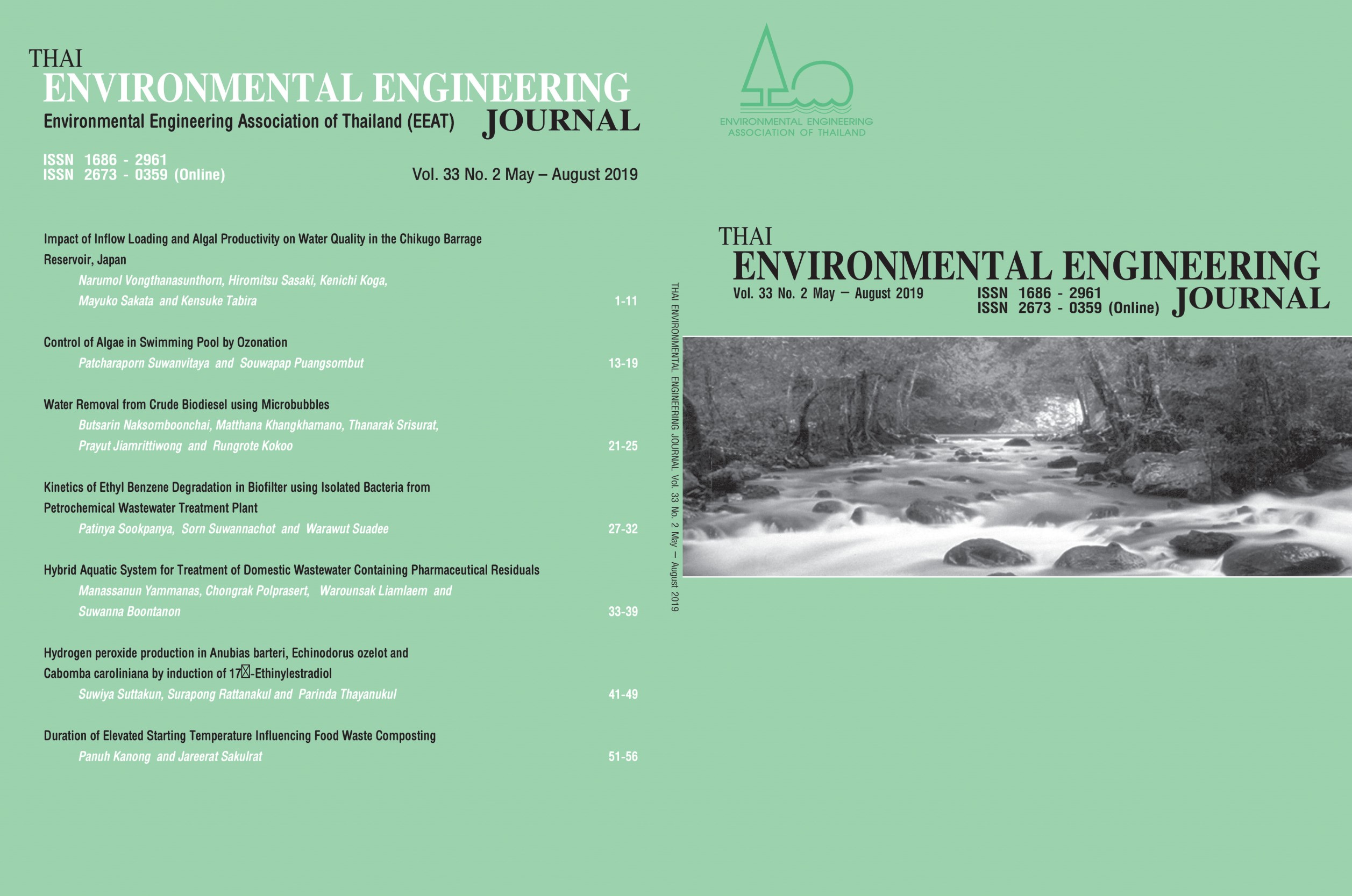Water removal from crude biodiesel using microbubbles
Main Article Content
Abstract
Current production of biodiesel using transesterification .however, Biodiesel is not yet available to the engine because there is contamination of the mixture is therefore necessary to have a process that makes biodiesel purification. Washing Biodiesel with water is the most common method of cleaning biodiesel. But the disadvantage of the process is high cost and longer manufacturing process.In this research, therefore, air bubbles at different sizes of diffusers (10-16µm, 16-40µm, and 40-100µm) and air flow rates (100 cc/min,200 cc/min,300 cc/min) were used instead to remove water in biodiesel. The results show that the smallest size of bubbles with highest air flow rate provided the highest removal rate of water. Using bubbling technique, can not only overcome those drawbacks suffering from the conventional processes. But also reduce the production cost and loss of biodiesel stuck out with the adsorbent.
Article Details
References
[2] Mahajan, S.; Konar, S. K.; Boocock, D. G. B.; JAOCS 2007, 84, 189.
[3] Atadashi, I. M., Aroua, M. K., The effects of water on biodiesel production and refining technologies: A review. Renewable and Sustainable Energy Reviews, 16, 3456-3470 (2012).
[4] He, B. B., Thompson, J. C., Routt, D. W., Van Gerpen, J. H., Humidity absorption in biodiesel and its petro-diesel blends. Appl. Eng. Agric., 23, 71-76 (2007).
[5] Oliveira, M. B., Varanda, F. R., Marrucho, I. M., Queimada, A. J., Coutinho, A. P., Prediction of water solubility in biodiesel with the CPA equation of state. Ind. Eng. Chem. Res., 47, 4278-4285 (2008).
[6] Verschueren, K., 1983. Handbook of Environmental Data on Organic Chemicals. Van Nostrand Reinhold Company Inc.,New York.
[7] Zimmerman, W. B., and J. M. Rees, 2009, Optimal modelling and experimentation for the improved sustainability of microfluidic chemical technology design: Chemical Engineering Research & Design, v. 87, p. 798-808.


